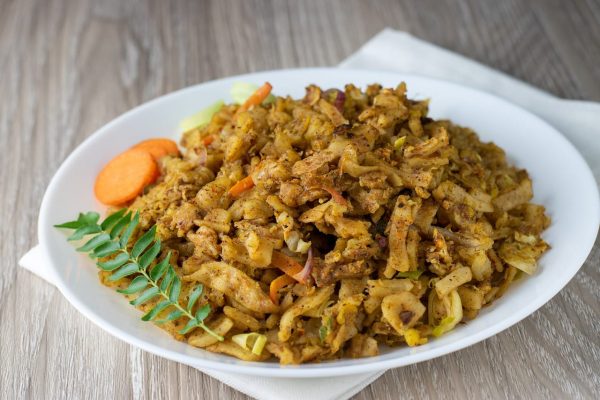
Have you ever walked through the bustling streets of Sri Lanka at night and heard the unmistakable clang of metal spatulas? That sound is a symphony to every food lover—a signal that a fresh plate of Kottu Roti, Sri Lanka’s beloved street food, is being prepared. A dish that transcends generations and cultures, Kottu Roti is more than just a meal; it’s an experience and a celebration of Sri Lankan culinary heritage.
The Origins of Kottu Roti
Kottu Roti’s story begins in the 1970s on the streets of Sri Lanka. Vendors, resourceful as ever, sought a way to repurpose leftover godhamba roti—a soft, flaky flatbread. They chopped it into bite-sized pieces, tossed it with vegetables, spices, and eggs, and served it piping hot. The name “Kottu” itself comes from the Sinhala word meaning “chopped.”
From its humble beginnings as a working-class meal, Kottu Roti quickly became a national sensation. Its versatility and flavors resonated across Sri Lanka, making it a dish that brought communities together. Whether it’s a busy office worker grabbing dinner on the go, a family sharing a meal, or friends enjoying a late-night snack, Kottu has become a unifying symbol of Sri Lanka’s diverse culture.
A Culinary Performance Like No Other
One of the most captivating aspects of Kottu Roti is the preparation process. Standing by a street-side stall, you’ll witness a mesmerizing performance:
- Metal spatulas dance on the griddle, creating a rhythmic melody.
- The roti is chopped and mixed with vegetables, proteins, and aromatic spices.
- The sizzling sound and rising aroma captivate onlookers, drawing them in.
This is not just cooking; it’s theater, and the chef is the star performer.
The Essence of Kottu Roti: Ingredients and Variations
At its core, Kottu Roti starts with chopped godhamba roti, fresh vegetables, and an array of spices like turmeric, curry leaves, and mustard seeds. But the beauty of Kottu lies in its adaptability.
- Classic Chicken Kottu – The all-time favorite, combining succulent chicken with a medley of spices.
- Vegetarian Kottu – A rainbow of vegetables, perfect for plant-based eaters.
- Egg Kottu – A simple yet satisfying version with eggs scrambled into the mix.
- Cheese Kottu – A modern twist that adds melted cheese for a rich, indulgent flavor.
- Seafood Kottu – A coastal favorite, featuring prawns, cuttlefish, or fish.
- String Hopper Kottu – A creative variation using string hoppers (idiyappam) instead of roti.
Each variation tells its own story, showcasing the creativity of Sri Lankan chefs.
Kottu Roti as a Cultural Bridge
More than a dish, Kottu Roti represents Sri Lanka’s vibrant social fabric. It’s a meal that brings people together, regardless of background. At a roadside stall, you’ll find students, office workers, and tourists gathered around, united by their love for this iconic dish.
Kottu also adapts to regional flavors:
- Northern Sri Lanka: Spicier with influences of Tamil cuisine.
- Southern Coast: Features seafood, reflecting the region’s coastal bounty.
- Eastern Provinces: Often enhanced with extra chilies and bold spices.
Every bite is a testament to the island’s diversity and culinary ingenuity.
The Kottu Experience
Enjoying Kottu Roti is a sensory journey. The smoky aroma, the satisfying crunch of the roti, the heat of the spices—it all comes together in perfect harmony. Pair it with a side of spicy sambol or a dollop of cooling yogurt, and you’ve got a meal that’s both hearty and unforgettable.
Kottu Roti is more than just food; it’s a symbol of Sri Lanka’s soul. Its rhythmic preparation, vibrant flavors, and social appeal make it a dish unlike any other. Whether you’re a local savoring a nostalgic favorite or a visitor experiencing it for the first time, Kottu Roti promises a taste of Sri Lanka’s warmth, creativity, and community spirit.
So the next time you hear that iconic clatter on a quiet Sri Lankan evening, don’t just walk by—stop, savor, and become part of the Kottu story.